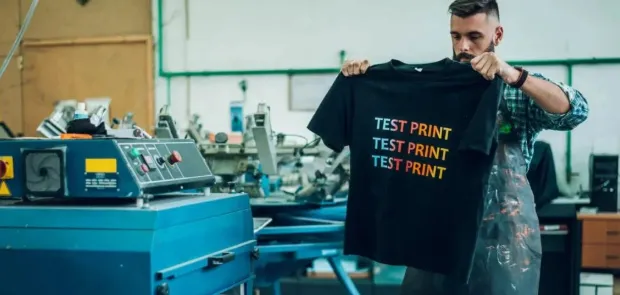Large frame scanning plays a crucial role in the modern age of digital archiving. In an era where each moment can be captured and eternally preserved, such technology provides a distinct advantage of converting large physical documents, artworks, and photographs into digital formats. This method not only safeguards the intricate details found in large-scale formats but equally ensures that these treasured memories and historical artifacts endure over time, impervious to physical deterioration.
Preserving the Past, Printing the Future: Singapore’s Printing Industry Embraces Large-Frame Scanning
In Singapore, the printing industry has been experiencing significant changes reflecting global trends towards digitalization. Professionals in sectors from advertising to historical archiving are turning to large-frame scanning solutions to digitize oversized materials that previously faced limitations due to their size. The shift is driven by both the need for efficient archiving methods and the benefits it brings to reproduction quality. Scanned images can be reproduced at various scales without loss of detail, which aligns well with Singapore’s dynamic printing needs across varying sectors.
Furthermore, Singapore has embraced eco-friendly practices within its printing industry by reducing reliance on paper through digitization efforts. By opting for digital copies over additional print runs for oversized materials, industries can significantly cut down on resource usage. Large frame scanning complements this green initiative effectively.
In today’s tech-savvy world, data has become increasingly digitized, and large-frame scanning stands out as a pivotal tool for memory preservation. The integration of large-scale scanning across the varied printing sectors in Singapore demonstrates a dedication to excellence, productivity, and eco-friendliness. These practices are increasingly gaining traction both domestically and worldwide as numerous industries acknowledge the substantial benefits delivered by advanced large-scale scanning technologies.
Scaling Artistry: Large Frame Scanning’s Role in Diversifying Artistic Expression
Large frame scanning technology employs high-resolution scanners to digitize oversized pieces, ensuring a faithful reproduction of the original’s fine details. Artists, galleries, museums, and archivists find this method invaluable for preserving and showcasing large-format works.
A primary technological advantage of large-format scanners is their ability to achieve high-resolution scans. These devices attain images with a considerably high dots per inch (DPI) ratio, which proves vital for accurately rendering the textures, color variations, and brushstrokes in paintings, as well as the fine gradations of tone in photographs. The highly detailed digital outputs enable viewers to appreciate the art nearly as if observing the originals.
Another major benefit of utilizing large-frame scanning technology is its capacity to preserve image quality across various print sizes. This aspect is crucial for creating customized products, such as bespoke T-shirts. By employing large-frame scanners, artists and photographers expand their market presence through the sale of high-quality replicas on diverse substrates, including T-shirts featuring their unique designs. This method enhances the visibility of their work and introduces it to consumers in a unique and usable form.
From Canvas to Tee: Crafting Cutting-Edge Custom T-Shirts With Large-Frame Scanning
In Singapore, custom t-shirt printing transcends mere fashion, offering a medium for personal statements and memorable designs. It distinguishes individuals within the city’s colourful tapestry. One of the significant advancements that has transformed this industry is the use of large-scale scanning technology.
Large-scale scanning technology has revolutionized custom t-shirt printing in Singapore by streamlining the process of capturing intricate designs and ensuring that they can be replicated with unparalleled precision on fabric. This method involves capturing a digital image of the artwork or design intended for printing and then using sophisticated software to manipulate, enhance or even scale it to fit the t-shirt perfectly without losing any detail.
The accuracy provided by this technology means that custom t-shirt printing businesses can cater to clients wanting highly detailed prints, such as intricate line work or photorealistic images. This precision resonates well with both artists looking to showcase their work in wearable form and businesses aiming to keep their branding sharp and professional on corporate wear. Large-frame scanning ensures efficiency in producing large quantities of shirts/t-shirts while maintaining consistency and capturing every detail of the original design.
Large-scale scanning technology can immortalize personal images, artworks, or handwritten messages onto fabric. This innovation resolves numerous challenges that previously hindered Singapore’s t-shirt printing industry, such as design constraints and slow production. With these advancements, businesses deliver products rapidly while maintaining high quality. Consequently, customers enjoy swift delivery of premium garments that accurately represent their individuality or corporate brand.
Summary:
Singapore’s printing industry mirrors the worldwide trend of digital transformation, consistently incorporating large-frame scanning technologies throughout various sectors. The technology streamlines the archival process and delivers outputs of superior quality, contributing to eco-friendly practices. It accurately records intricate details in large-format documents, providing artists and record keepers with detailed output for multiple applications. Within the realm of bespoke clothing, this ensures precise replication of complex patterns on t-shirts, bolstering the local apparel sector with custom-made, high-quality products.










